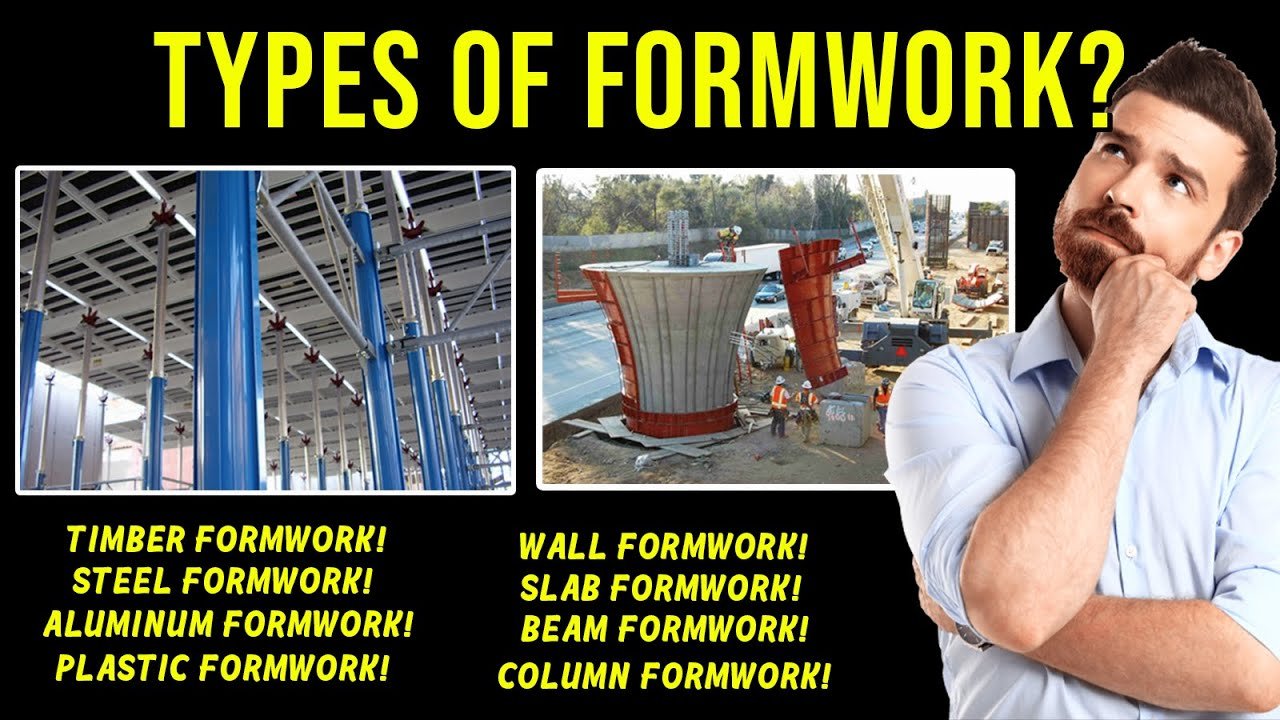Concrete is one of the most commonly used materials in the construction industry. It’s used for a vast range of structures and structural components from bridges and columns to walls and foundations. Those are only a few of the ways crews use concrete to provide longevity, stability, strength, and many other benefits. When building with concrete, though, certain tools can make the process more efficient and effective. Construction formwork is one of the most important.

Several types of concrete formwork are available. Each one has its own uses and advantages. Exploring the different concrete form systems and their features can help construction companies choose the best ones for the jobs they’re completing.
Steel Formwork
Steel gives formwork exceptional strength and durability. These form systems are often used for large projects. Steel formwork can give structural components a smooth finish, and it can hold up against heavy weight. Though steel formwork may be more expensive than some other options upfront, it lasts a long time. These molds are also reusable. That makes them more cost-effective from a long-term perspective.
Aluminum Formwork
Also a type of reusable mold, aluminum formwork is a long-lasting option. It’s lighter than steel, but it still offers a certain amount of strength. It’s also resistant to corrosion. Aluminum concrete forms are often pre-assembled, and they’re helpful for projects with repetitive components, like apartment complexes. Aluminum molds are portable and easier to set up than certain other alternatives.
Timber Formwork
Timber is one of the most commonly used materials for formwork. It’s widely available, versatile, and relatively inexpensive. These concrete forms are best for small and medium-sized projects. Though wood is strong, it can’t handle the same weights as steel and aluminum. Timber construction formwork is typically built on-site, and it’s highly customizable. That said, it’s not as reusable as other materials.
Plastic Formwork
Plastic concrete molds are often used for small and medium-sized projects with unique or complex designs. They can easily be cleaned and reused, and plastic’s lightweight nature makes it easy to handle and assemble. Plastic form systems are recyclable as well.
Fabric Formwork
Fabric concrete forms use flexible, permeable sheets of material to hold concrete until it hardens. They’re highly versatile and customizable, so they’re beneficial for projects with unique and intricate designs. Because of their composition, these form systems easily allow moisture to drain and air to flow through concrete. That aids in the curing process.
Slipform Molds
Slipform molds are moving formwork systems. They’re generally used for taller structures as they’re designed to move along with the progress of a project. They move vertically for continual pouring. They’re particularly useful for vertical, cylindrical, and tapered structures, but they can be used for many other purposes.
Permanent Formwork
Many types of formwork are removed after they’ve served their purposes. That’s not the case with permanent formwork. It’s designed to remain in place after concrete has hardened. It provides added support and structural integrity. Different types of permanent formwork are available, but insulated versions are popular. They can give buildings extra energy efficiency in addition to strength and stability.
Choosing the Best Formwork for Different Applications
Numerous types of formwork are available. Regardless of the project at hand, crews need these systems to provide strength, stability, and affordability. Beyond those factors, their requirements tend to vary by project. Each type of formwork has its own benefits and best uses. Consider the type of project and the characteristics of different molds to help determine the best one for the job.

